A Family Adventure in the Paradise of Palau
It was our usual holiday prep: while throughout the year other friends (even the ones without kids) fine-tuned carefully planned itineraries to exotic locations, poring over timetables and calculating how much local currency they'd need, late one sleep-deprived night, jiggling an inexplicably wide awake child apiece on one hip and self-medicating with alcohol in the other hand, my husband and I decided we needed a holiday, immediately. With no idea what we were after, we entered into Google something along the lines of "direct flight from Tokyo + sun + beach" and came up with Palau. Neither of us had ever heard of it, the only flights seemed to leave or arrive in the middle of the night, and the only guidebook we could find was what looked like a 1980s leaflet written by someone called "Papa Mike." But the photos looked incredible, there would be no jet lag, and the flights were less than five hours long—reason enough, we decided within the quarter-hour, to take our three- and one-year-old there the following week.
Palau, it turns out, is an archipelago consisting of about 200 islands, only eight of which are permanently inhabited. It makes up the westernmost islands of the Caroline Islands in Micronesia (me neither), is famed for its marine life and home to just 21,000 inhabitants. On a world map, it’s directly south of Japan, off to the right of the Philippines. Although, to be accurate, it’s not actually on the majority of world maps; there’s a massive expanse of Pacific, and you have to imagine there’s a pin prick somewhere in the middle that is your ideal holiday destination. If, that is, your ideal holiday destination is a Robinson Crusoe island, or, indeed, the setting for the TV series Survivor.
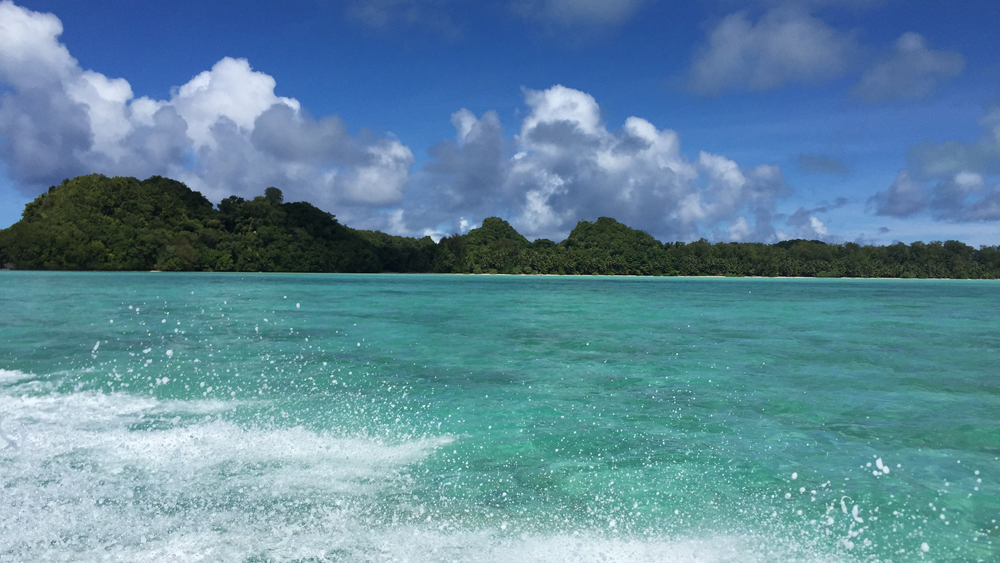
We arrived at Airai airport on the main island of Koror at 2 a.m., imagining we’d be greeted by a few half-asleep customs officers and have to bang on the door of our slumbering hotel. In fact, Koror was buzzing, as all the airport activity is nocturnal, presumably because, being so far away from anywhere else, flights have to make stopovers in other countries at more traditional hours. Our friendly taxi driver had no problem finding our hotel because, it turned out, his aunt’s cousin-in-law was the owner’s wife. And the owner, in fact, was related to the president. Which made him also slightly related to the president, a fact which he let sink in for an awestruck moment or so before admitting with a guffaw that in a population this size, he thought actually everybody was probably related to the president. In the dark, all we could make out were wide, well-maintained streets and endless vegetation, making the impressive midnight heat even more humid.
Despite the draw of the direct flight to it, we’d decided, lured by photos that looked too good to be true, to move off Koror for the majority of our trip, and were picked up to be taken to the boat departure point (to call it a harbor would be over egging it) at 8 a.m. the next morning. That was, through pure luck, a crucially good decision; Koror is the industrial capital of Palau, boasting around two thirds of the country’s population, and though not without its charms, sports a dilapidated American small-town vibe, complete with a lot of car parks and fast-food joints, that doesn’t automatically scream “pristine paradise,” as Palau is self-described on its tourist website. The majority of beaches have been privatized by resorts. The American influence is probably something to do with the fact that Palau, since 1994, having passed through the hands of the Spanish, the German, the Japanese and the Americans, has been an independent state in free association with the U.S. The flip side to the fast-food joints is that the official languages are Palauan and English, the currency is U.S. dollars and using your credit card is as easy as it is at home, making travel here infinitely easier than we’d suspected when we first saw it on the map.
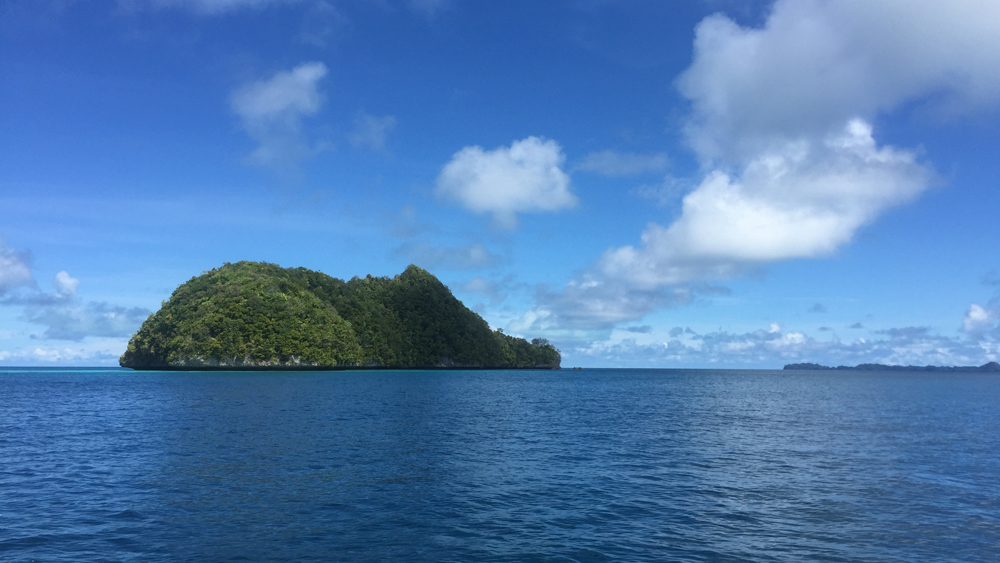
In contrast to Koror, the other islands have next to no inhabitants and are unhindered by trappings like shops and roads, so you can literally get away from it all (if you take a fair amount of it with you). Our boat drivers were appealingly relaxed, apparently in a permanent state of hilarity and teasing the children relentlessly. We set off on time, not an automatic feature of other hot, laid-back countries I’ve visited, and sped through what can only be described without any hyperbole as the most beautiful scenery in the world.
The rock islands of Palau are semi-spherical limestone structures that rise out of the sea below their widest point; the way they seem to balance on the water gives them a majestic, other-worldly air. Where they come out of the sea, the rock is sharp and jagged (the islands were originally formed by coral reefs bursting out of the water), while the top is a mass of jungle so lush and green you imagine tropical wildlife living in Biblical harmony. The rock islands are home to many endemic and endangered species, and while there’s evidence of long-ago human habitation on a handful of them, both the inhospitable structure of the islands and the laws of Palau strictly control any human activity on them now. Declared a Unesco World Heritage site in 2012, each of the 200 islands seems more magnificent than the last, rock structures like ancient architecture bending and swooping to form stone altars and cathedral windows, looming out of water so turquoise and sparkling your eyes hurt from the sun reflecting off it, and from the effort of staring so hard without blinking so as not to miss a moment. The sky is another shade of the brightest blue, spray off the ocean and wind in your face keeps the heat of the sun at bay, and before long everyone was laughing semi-hysterically with the exhilaration brought on by so much beauty.
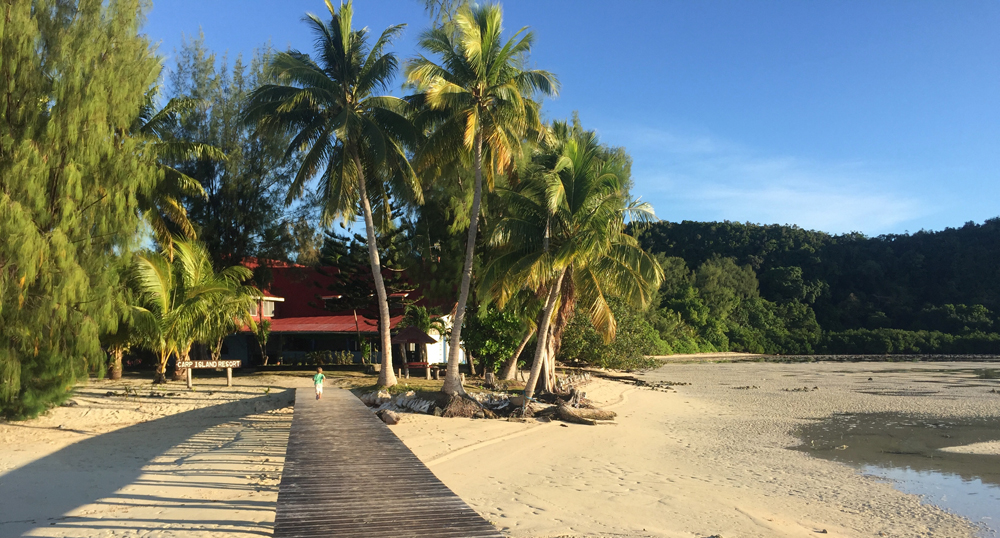
Forty-five minutes through the Southern Lagoon (the official directions to Carp Island Resort), we arrived at our destination and walked along the jetty, leading to golden, palm-fringed beaches with sand as fine as flour and nothing but the crystalline Pacific dotted with a few rock islands as far as the eye could see. Carp Island boasts around ten permanent residents, a handful of huts on stilts dotted along the beach and in the well-maintained garden, a central dining area, a lot of diving equipment and dozens of well-placed hammocks. On arrival, one of the smiling staff brought us coconuts with straws stuck in them, and before we’d even taken our bags to our hut, we lay down in the hammocks and watched the palm leaves rustling in the breeze. The children were mysteriously quiet. It couldn’t have been any more perfect.
Over the next week or so, we spent a lot of time on and in the water. The kids and the birds would wake up around 5 a.m. (leisurely, I know), in time to see the sunrise over the sea and get some early-morning splashing about in, possibly with the resident dog in tow. Then we might take it in turns snorkeling, floating lazily through the coral around the island or over to the giant clams, waving at the sharks (harmless, apparently) hanging out nearby. We went on snorkeling boat trips, the children asleep like starfish on the deck while we communed with hundreds of inquisitive looking, jewel-colored fish, none of which I can remember the names of and all of which looked like characters in Finding Nemo. I convinced my husband he wanted to spend a day building sandcastles with the boys (not that difficult) and went diving, feeling a cheat as I joined lifetime divers who’d traveled for literally days to visit this diving mecca, and was presented within five minutes with a manta ray billowing on the seabed and a turtle, enormous and unwieldy with a characteristically stoned expression, ambling along slowly enough not to disturb the moss growing on its shell.
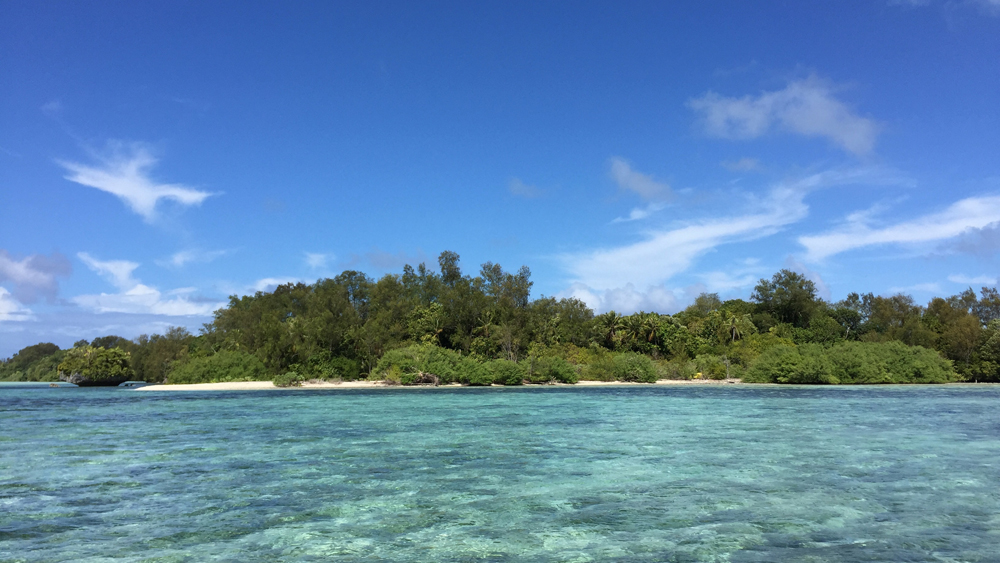
Most incredible (if anything can be more incredible, undersea-wise, than swimming next to a manta ray and a turtle in quick succession) were the jellyfish lakes, saltwater mountain lakes that were once part of the sea, but have now been cut off for so long that the jellyfish, living entirely without predators, have lost their sting. I’ve been stung by too many jellyfish not to be afraid of them, and wasn’t entirely convinced about swimming among hundreds, but since it’s the only place on the planet where it’s possible, it had to be done. Around the edge of the lake, where we dropped in from wooden decks, there were just a few, floating past slowly, showing off their opalescent pinks and purples, pulsing gently as they swam like living lava lamps, and I remembered that in Japan, jellyfish-watching is famed for its relaxing properties, drawing crowds in search of some inner zen to city aquariums. As we neared the middle of the lake, their numbers increased so you couldn’t avoid brushing past them, until in every direction all I could see were the beautiful translucent globes, undulating unhurriedly through the water, their colors moving through a spectrum of milky mauves like the surface of a moonstone. It was enchanting, like being on a trip in some benevolent alien universe.
As well as nature underwater, Palau is rich in wildlife above ground. The Carp Island Resort occupies about a third of the island—the rest is dense jungle. We walked the 45 minutes or so through it to the beach on the other side one day, the baby in his sling stuck to me slick with sweat, but fortunately too mesmerized by the foliage and the cacophony of mysterious noises to complain. While my husband, a boy scout at heart, loved the jungle trek and basically skipped through it singing, I couldn’t quite shake its eerie atmosphere. Palau was the scene of much bloody fighting between the Americans and the Japanese in World War II, with the infamous Battle of Peleliu claiming the lives of 10,000 Japanese and 2,000 American soldiers. So dense is the jungle and so bitter the fighting that a Japanese lieutenant and his 34 men in fact remained in hiding in a cave in Peleliu until 1947, when a Japanese admiral finally managed to convince them that the war was in fact over. It’s perhaps not entirely surprising then that the jungle walk, while incredible, conjured up images of soldiers left in its oppressively humid hostility to fend for themselves, and wasn’t quite a walk in the park.
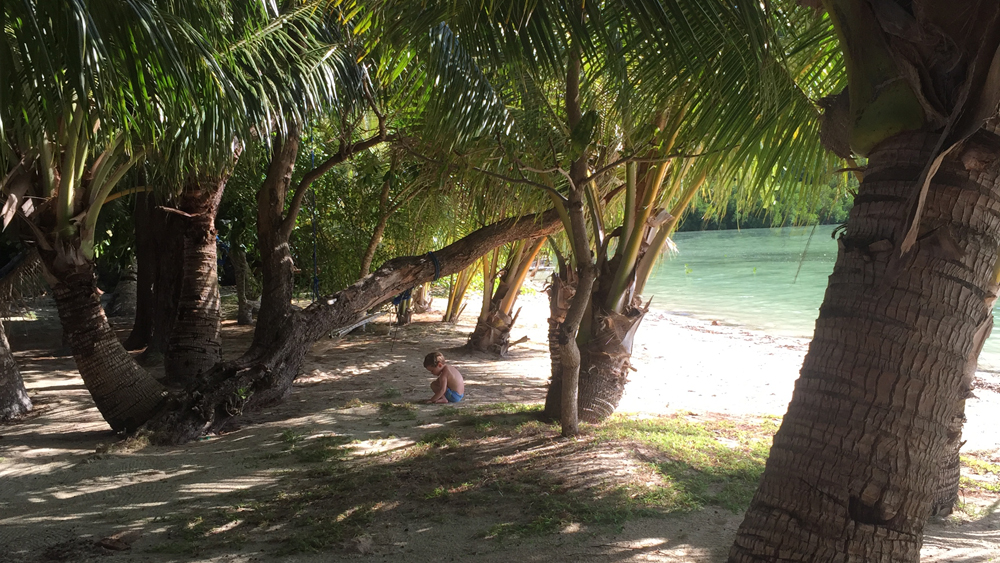
There were other moments too when I, a city girl through and through, it turns out, found nature encroaching a little too close; my husband found the prospect of seawater crocodiles (apparently up to four and a half meters in length) in the mangrove swamps hilarious, me not so much. One morning we found the tide low enough in one cove to have created a perfect, deserted beach and put the sleeping baby, well padded by lifejackets, in a kayak in the shade of a tree while we built a sandcastle nearby. Locals had been happy to inform us that nothing on Palau was really poisonous or worth worrying about—except the striped black and white sea snake, which is one of the most venomous snakes in the world. And which was the snake slithering about a foot away from the baby, over the kayak, when I looked up. Suffice it to say that despite a fair amount of yelling (mostly from me; the baby stoically slept on), nothing actually happened, and I’ve since heard both that the snake is actually a peaceful little creature who rarely attacks, and that its jaw is so small that it could only bite you if you put your finger directly into its mouth (or, if you’re a baby, presumably your entire arm. But anyway).
Palau is well aware of its privileged and precarious position in being an area of such natural beauty, and takes admirable steps to protect it. The shark sanctuary covers about 600,000 square kilometers of sea, an area almost twice as large as the landmass of Japan, and Palau initiated the Micronesia Challenge to conserve near-coastal waters and forest, an initiative to which many other Pacific countries have now signed up. There’s a $50 ‘Green Fee’ that goes toward protecting natural resources and is payable on arrival at the airport, and in an effort to prevent attractions like the jellyfish lake from being overrun by tourists, there are various permits and tickets you have to buy to be able to go, and nothing is cheap. This is definitely a good thing. I murdered a jellyfish in the lake—manslaughter, technically, since I didn’t do it on purpose; my snorkel filled with water and in the flailing that followed, I beheaded one with the end of my flipper. I still feel really bad about it. And if everyone who went accidentally beheaded a jellyfish…etc., etc., so I hope future tourists will be less mal-coordinated than me and that Palau will be ready for them.
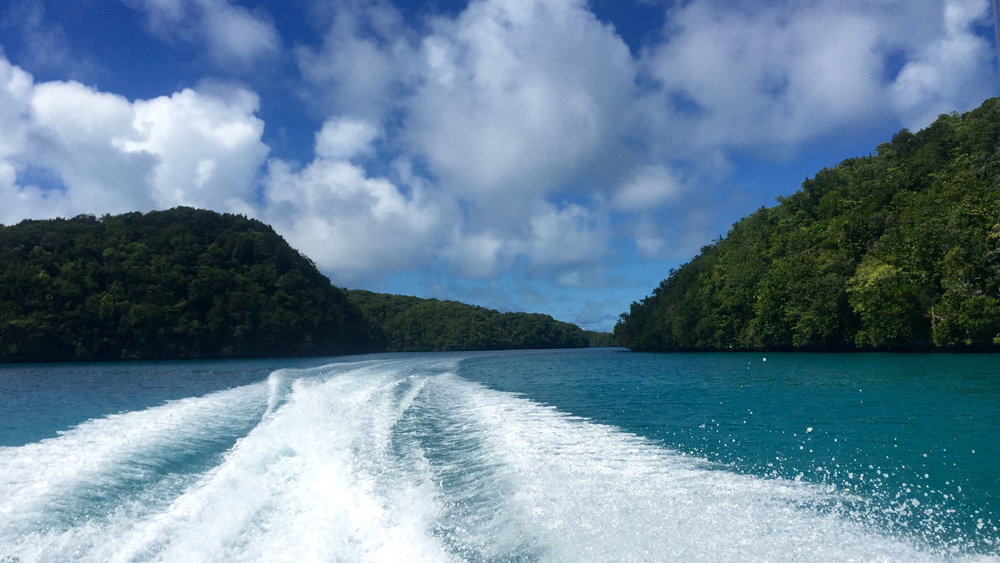
On our return, it was home, Tokyo with its skyscrapers and neon, that seemed unreal. I’m not sure what we’d been expecting, but I don’t think it was quite the unfiltered immersion into the natural life of an archipelago that the holiday turned out to be. I don’t know if anywhere else even exists that’s as unspoilt and beautiful. I’m already planning our trip back—just as soon as the boys are old enough to keep their own x-ray eyes out for snakes.
The Deets
Getting there: Delta flies nonstop from Narita to Koror four times a week, arriving in Koror at 1:00 a.m. and departing at 4:45 a.m.
Getting around: There are plenty of tour operators to help you organize boats between the islands, and on the islands you can walk, scramble or swim. There’s no public transport in Koror, but taxis can easily be organized from the airport or your accommodation.
Where to stay: There’s accommodation to suit every budget on Koror, but it’s well worth checking out accommodation on the other islands as well. For information on beautiful Carp Island Resort, including pick-ups in Koror and diving, click here.
More info: To read more about Palau, see its official tourism website.









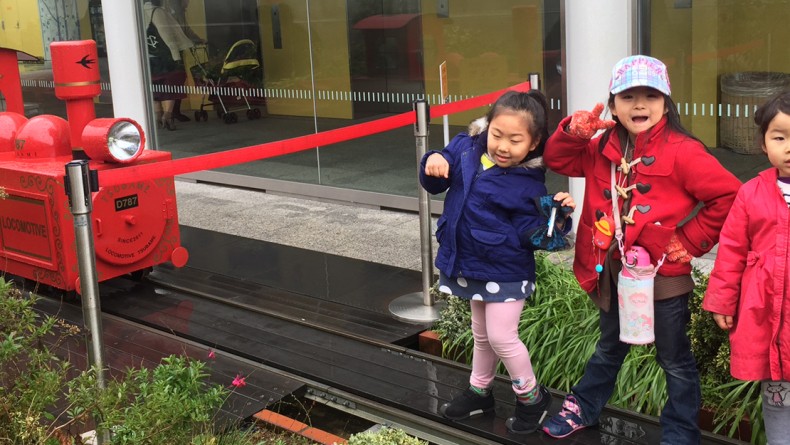
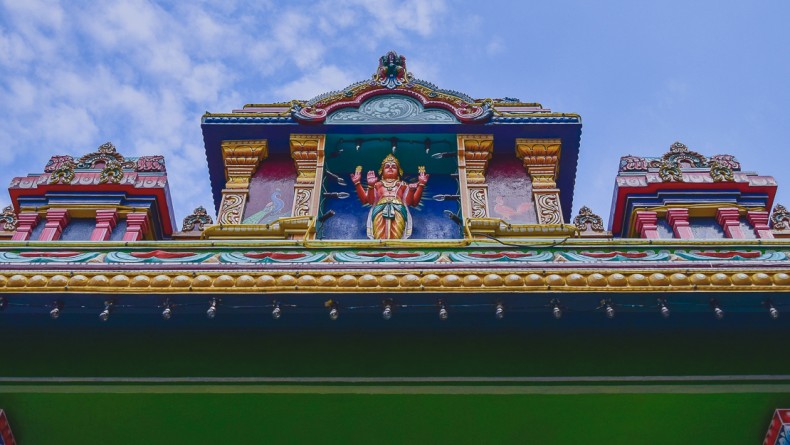
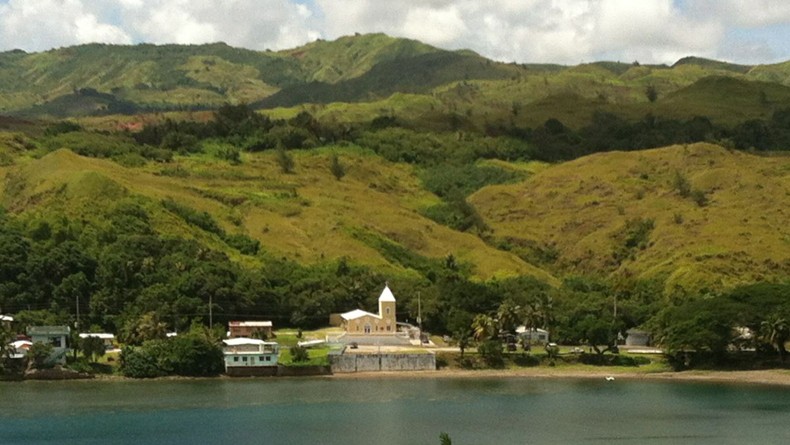
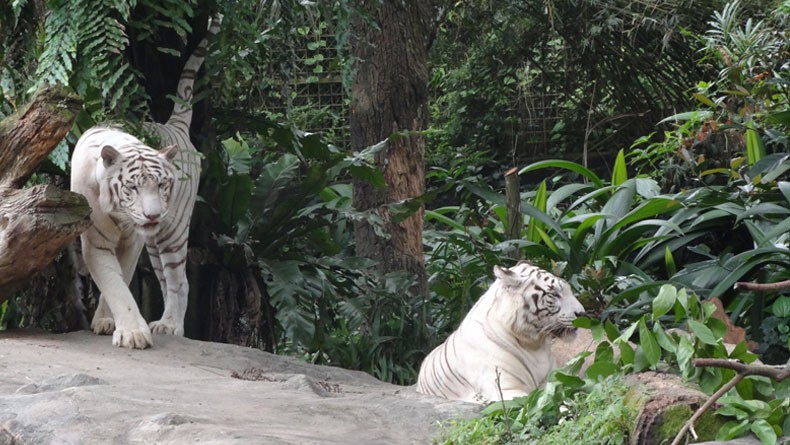
Leave a Reply